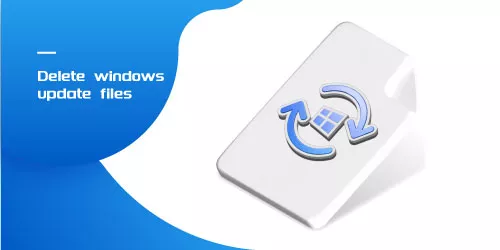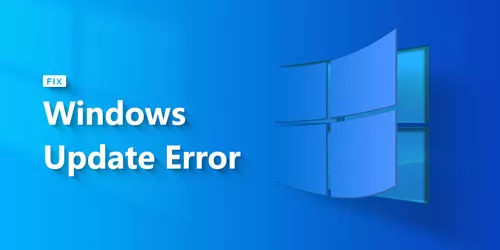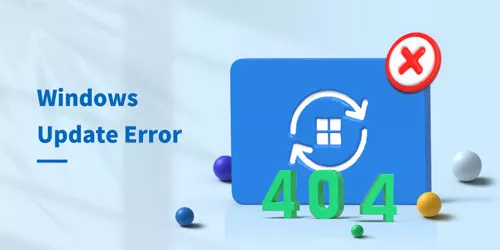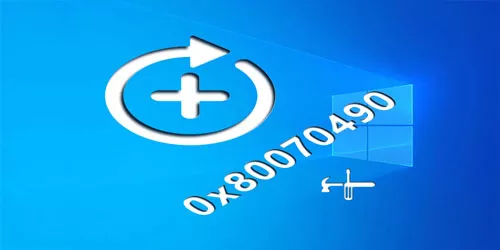3 Easy Ways to Check Windows 10 and 11 Update History
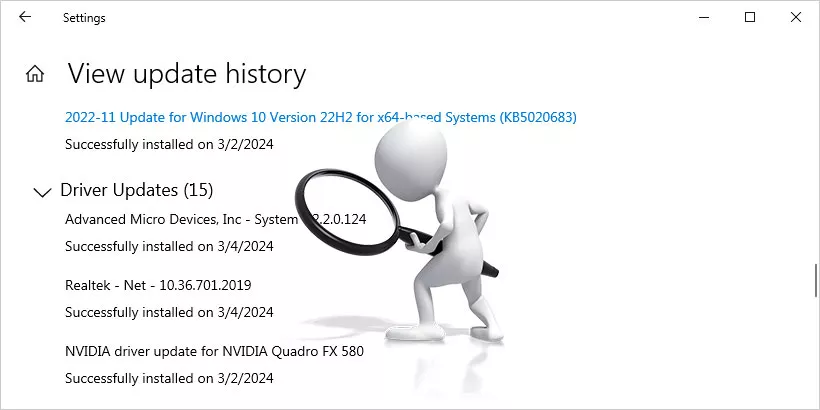
Keeping track of updates on your Windows system is important to ensure your PC runs smoothly and securely. In this guide, I'll explore three easy ways to check your Windows update history, ensuring you stay informed about your system's health. Whether you're using Windows 10 or 11, these methods will help you quickly access the details of your installed updates.
1. Check Windows Update History in Settings
The simplest and most user-friendly way to view your Windows update history is through the Settings menu. This method gives you a quick overview of all recent updates, including critical system patches, feature upgrades, and driver updates.
Step 1: Click the Start button and select the gear icon to open Settings. You can also use the shortcut Windows + I to access it directly.
Step 2: In the Settings menu, scroll down and click on Update & Security.
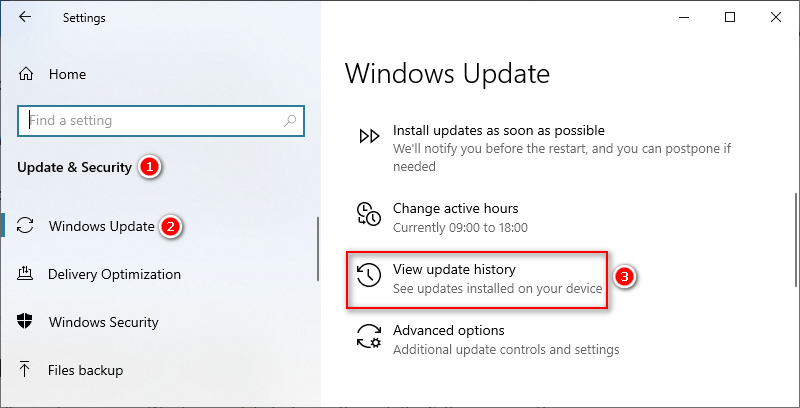
Step 3: Within the Update & Security window, click on View update history. Here, you will see a categorized list of updates, such as feature updates, quality updates, and driver updates.
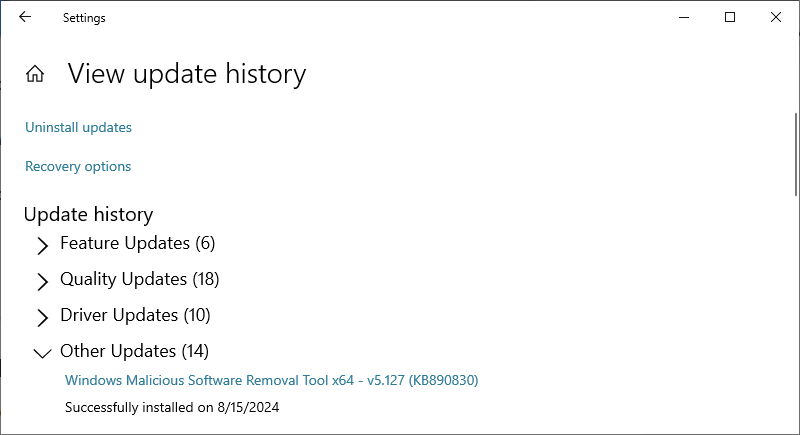
Note: In Windows 11, the path is slightly different. Navigate to Settings > Windows Update > Update history.
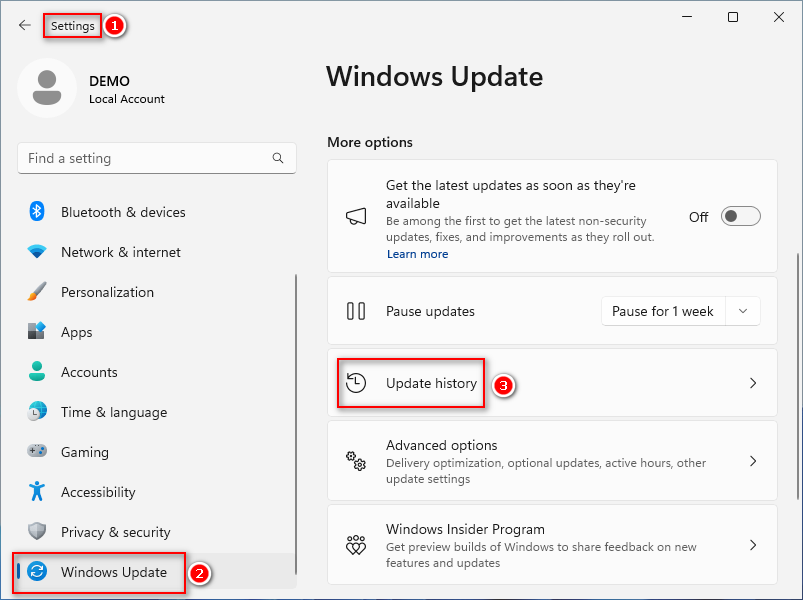
This is the most straightforward option for regular users because it provides a clean and categorized overview without the need for advanced tools. It is perfect for a quick glance at recent updates.
2. View Windows Update History in Control Panel
For those who are more familiar with the traditional Control Panel, this method offers a detailed view of installed updates. It's also the go-to method if you want to uninstall specific updates.
Step 1: Press the Start button and search for "Control Panel". Click on the Control Panel app from the results list.
Step 2: In the Control Panel, under the Programs section, click on Uninstall a program.
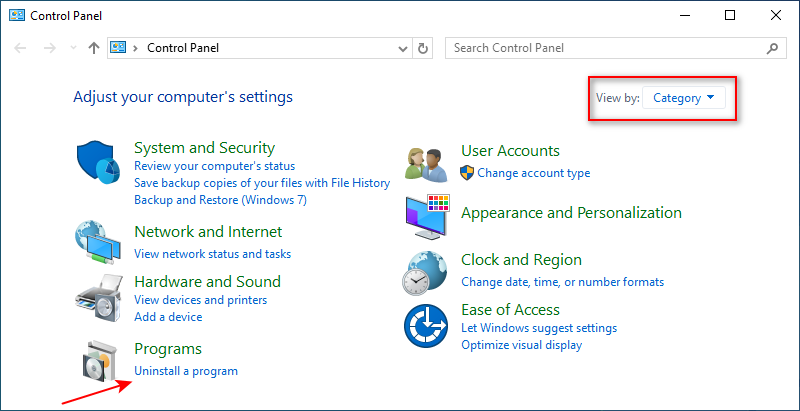
Step 3: On the left-hand side of the window, click View installed updates. This will present a detailed list of all the updates that have been installed on your system, including version numbers and installation dates.

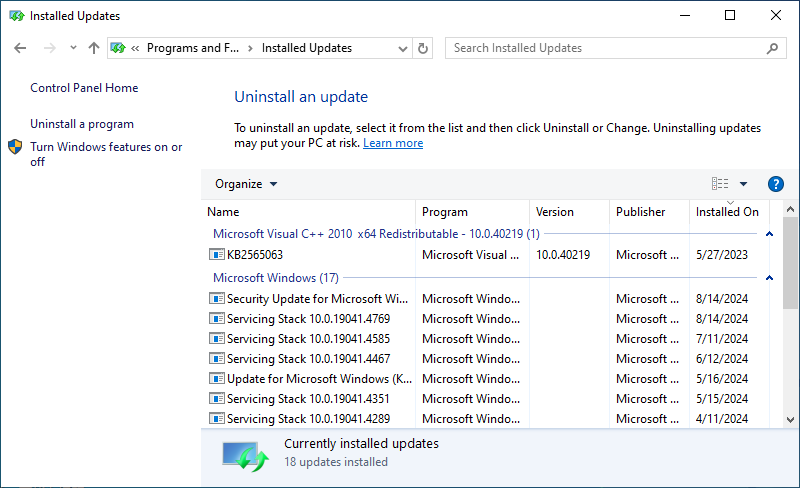
This method is ideal for users who need more detailed information about their updates, such as the ability to uninstall specific patches that may be causing issues. It's also useful for managing updates across older versions of Windows.
3. Check Windows Update History with PowerShell
For advanced users and system administrators, PowerShell offers a powerful way to view detailed update logs. This method allows you to script and automate update management tasks, making it a great tool for users who manage multiple systems.
Basic Command to View Updates:
Step 1: Open PowerShell as an administrator by searching for "PowerShell" in the Start menu, right-clicking, and selecting Run as administrator.
Step 2: Type this command in PowerShell to see a simple list of installed updates.
Get-HotFix | Sort-Object InstalledOn -Descending | Format-Table -AutoSize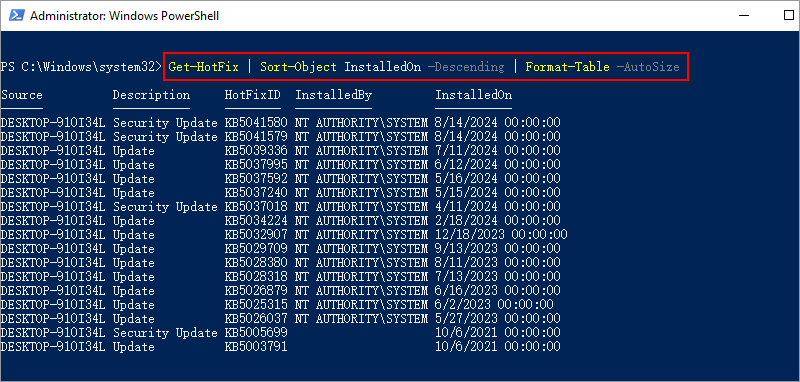
This will display a list of updates sorted by installation date.
Get Detailed Update Information
Step 1: Type this command to install the PSWindowsUpdate Module.
Install-Module -Name PSWindowsUpdate
If prompted about installing from an untrusted repository, confirm by typing "Y".
Step 2: Set the script execution policy to RemoteSigned by this command.
Set-ExecutionPolicy RemoteSigned -Scope CurrentUser
Step 3: Run this command to view the update history in PowerShell.
Get-WUHistory | Sort-Object Date -Descending | Select-Object Date, Title, Description, Result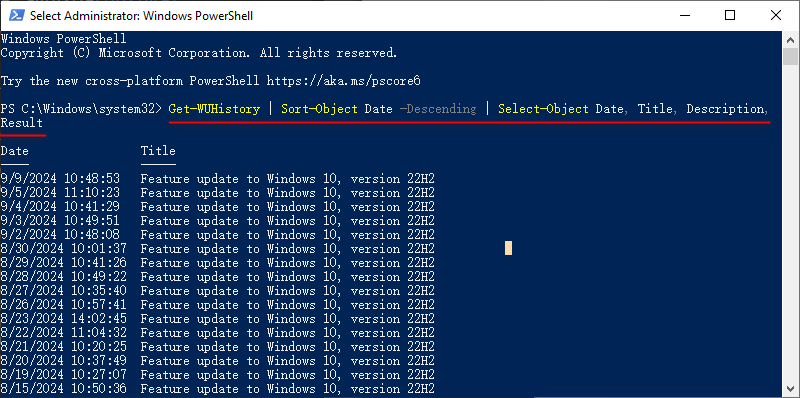
Tip: If you want to export the update history to a file, use this command.
Get-WUHistory | Sort-Object Date -Descending | Select-Object Date, Title, Description, Result | Export-Csv -Path "D:\update.csv" -NoTypeInformation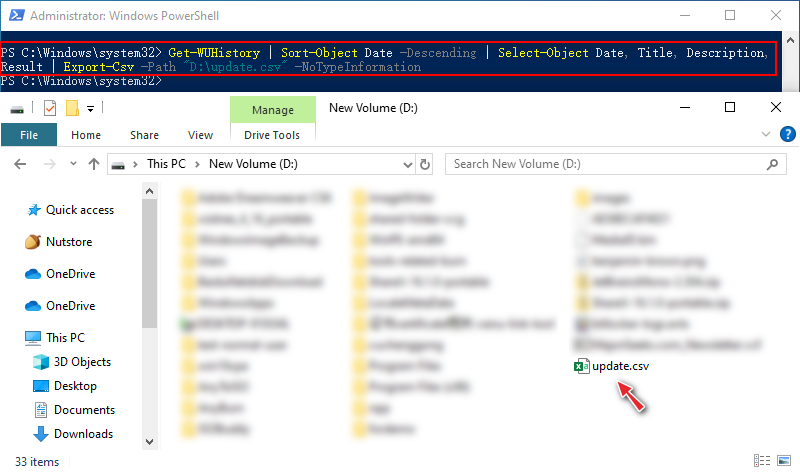
This command exports a detailed list of your update history to a CSV file for easy viewing.

Additional Note:
Once you're done, you can revert your execution policy back to Restricted for security purposes:
Set-ExecutionPolicy Restricted -Scope CurrentUserPowerShell is ideal for IT professionals and power users who need precise control over update information or want to automate tasks. It's a versatile tool that provides much deeper insights than the graphical interface methods.
4. Summary
Checking your Windows update history is a simple yet crucial task to ensure your system stays up to date and runs smoothly. Whether you prefer using the Settings menu for a quick overview, the Control Panel for more technical details, or PowerShell for advanced control, each method is effective.


